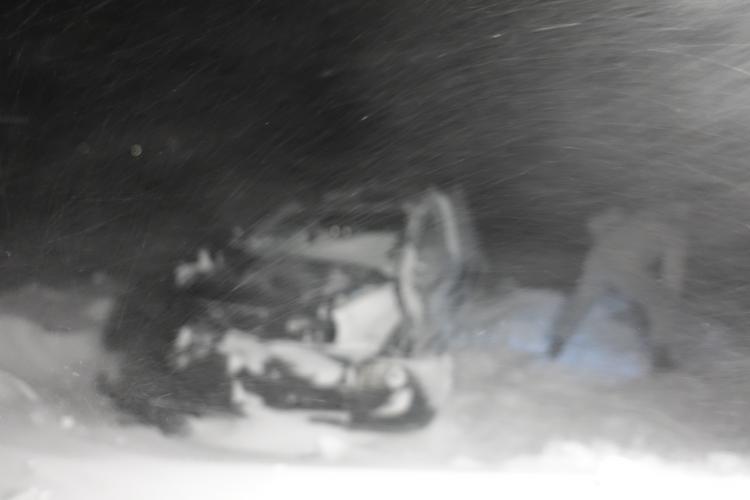Near The Climate Impact Research Center (CIRC), Abisko, Sweden. March 21, 2019.
The audience: Master students from Umeå Academy of Fine Arts, students from the Kuno network, a researcher from the CIRC and his child, a documentary filmmaker.
http://www.christophdraeger.com/projects/performance/abisko-crash-invest...
A car wreck on the side of the E10, the road leading to Norway. The accident is lit by a strong LED light. Heavy snowfall on and off under a full moon. Temperature minus 10. The performer, dressed in a white lab jumpsuit over skiing gear, approaches the wreck. The man is wearing a headlight and carries a shovel. He tries to prop open the dented door of the damaged car. He starts shoveling the snow out of the way to be able to access the inside, and creates a flat surface in front of the car. He investigates the inside of the car and pulls out various objects that were strewn across the destroyed interior. He lays out the objects on the snow in front of the car for later examination. A rubber carpet, a wire, a plastic soda bottle, a Norwegian coin, a piece of silver paper, a bent metal rod, a glass soda bottle, a piece of textile, a coke bottle. The man starts to clean the snow off the broken windshield. He sits inside starting to manipulate the car radio and turning the steering wheel. A song starts, feebly audible outside of the car, it's 'Motorcycle Irene' by Moby Grape. A road song.The man makes motor noises with his voice and moves the steering wheel wildly, as if he were a kid who simultates driving a very fast car on a windy road. The song ends in a crashing sound. The LED light goes out. The man is slumped over the steering wheel as if knocked out by the impact.

